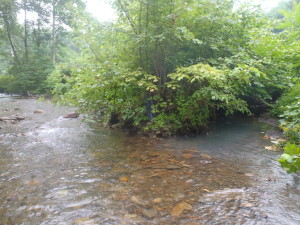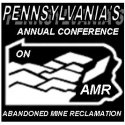The EPCAMR Board of Trustees at it’s February 21st Quarterly Board Meeting has adopted a new EPCAMR Illicit Discharges Reporting Policy in accordance with the PA Clean Streams Law and the US EPA National Point Discharge Elimination System regulations setup through the Clean Water Act and other relevant laws. EPCAMR Staff will now report illicit discharges, as defined by the US EPA, to the appropriate authorities as soon as possible. Should the EPCAMR Staff come upon information in the field of any known or suspected release of materials which are resulting or may result in illegal discharges or pollutants discharging into storm water, storm drain systems, or waters of the US and Commonwealth of PA, they shall take the necessary steps to ensure the discovery, containment, and cleanup of such release by notifying the appropriate authorities and or authorized enforcement agency in person, or by phone or facsimile, no later than the next business day. Notifications in person or by phone shall be confirmed by written notice addressed and mailed to the [authorized enforcement agency] within three business days of the phone notice.
The PA DEP prefers that notifications be made to the appropriate regional office. PA DEP also maintains a state-wide toll free number (1-800-541-2050), which serves as a backup to the regional numbers and also supports a reporting mechanism for people who don not know which regional office is responsible for a particular area. EPCAMR will call the following 3 regions depending our where the EPCAMR Staff may find themselves in the field during their water monitoring, watershed assessments, field investigations, or watershed surveys. NE Office-570-82-2511; SC Office-1-877-333-1904; NC Office-570-327-3636.
Setting this policy will allow EPCAMR Staff to immediately be able to report what they see if the field to the appropriate authorities who can investigate further to determine where the illicit discharges are coming from, particularly if it is emanating from a municipal or antiquated sewer line that they might come upon in the field as they walk streams from headwaters to their points of confluence with other tributaries that eventually lead to the larger stream or river systems. In the past, since there was no indication of who owned the lines, how long the illicit discharges have been flowing, or an immediate need to contact an appropriate agency when we didn’t know who to call first, EPCAMR Staff didn’t take the next step in reporting it during their initial investigations until they had completed their reports or full investigations based on the scope of work for a particular project. Those scopes of work usually didn’t entail the inspection of sewer lines that were faulty and in some cases failing and leaking directly into streams that were also AMD impacted, therefore, the EPCAMR Staff focused on the tasks at hand, yet would photo-inventory and document the sites for draft publication, in the case of technical report preparations, until further information could be gained to accurately acknowledge the sources of the discharges. Now, EPCAMR Staff will be more pro-active in their approach and report everything that they see in the field and let the appropriate authorities do the further investigations and follow-up necessary to make those calls, since they are the regulatory authorities and we are not. EPCAMR doesn’t have that jurisdiction, nor does it want it.













You must be logged in to post a comment.